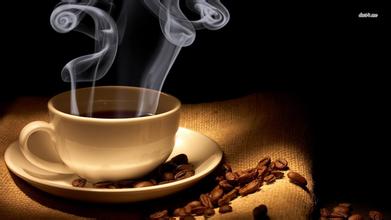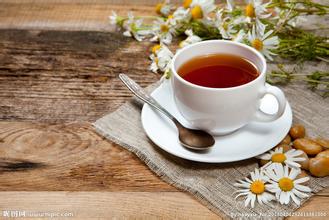An introduction to the coffee flavor and taste of Lazmus Manor with bright and high-quality acidity
The first part of the China Coffee Network is a background triangle, which symbolizes the Andes and implies that most of the Arabica coffee growing areas in Colombian coffee belong to high-altitude mountains. It is well known that the main coffee producing areas in Colombia are located in three mountains arranged with the word "Sichuan", all of which are part of the Andes. According to the geographical environment and climate, the characteristics and flavor of coffee in different regions are the same.
The second part is the mule. Please note that it is not a donkey! In Colombia coffee farmers actually use mules to carry coffee from the mountains. Because the mountain road in the coffee growing area of Colombia is very rugged, coffee farmers mostly use mules as a means of transportation. because of such unique geographical conditions, even with the development of transportation and science and technology today, it is impossible to transport coffee and raw beans from more than 1000 meters above sea level. and rugged mountain roads to transport coffee beans, so the way of carrying mules continues to this day.
The third part is the man in the straw hat, who has a name. His name is Juan Valdez. People used to call him "Uncle JUAN VALDEZ". Juan Valdez is the representative image of Colombian coffee growers and a symbol of Colombian coffee, which distinguishes it from coffee from other countries of origin and is accepted by different markets. In the last 40 years, Colombian coffee growers have made great efforts to create the "JUAN VALDEZ" brand we see today. In 2005, the New York Times confirmed the importance of this brand in the United States, because its trademark recognition has exceeded many of the world's leading brands and gradually become a world-famous brand.
In order to better promote Colombian coffee, the Colombian Coffee Growers Association (FNC) launched a live-action version of Juan Valdez based on this image.
Now the uncle is the third-generation real-life version. Uncle Juan Valdez, who represents Colombian coffee farmers, as the ambassador of Colombian coffee, will travel around the world to promote Colombian coffee. A beard, a straw hat and the mules around him are his necessary wardrobe. Uncle Dou was also glad to see him at the 2010 Shanghai World Expo. Colombian coffee has a silky taste. Colombian coffee is equated with high quality and good taste. It is sweet in acid, low in bitterness, rich in nutrition, with a unique sour and mellow taste, and the sour, bitter and sweet flavors of Colombian super coffee match well. Unique fragrance, after drinking, the aroma fills the whole mouth. Exhale the aroma from the mouth again from the nose, the smell is very full. Perhaps you will find it too overbearing, because it will occupy the taste buds, mind and even soul as quickly as possible. In people's life, it is full of sour, sweet, bitter and astringent, and the aroma of this coffee is enough to take away everything in the world. What people enjoy is not just a cup of coffee, but also the quiet moment that coffee brings to people. Columbia super is characterized by its aroma, rich and thick, with clear high-quality acidity, high balance, endless aftertaste.
The world coffee is divided into two series, one is the "hard" coffee represented by Brazil, which has a strong flavor, and the other is the "soft" coffee represented by Colombia, which has a light flavor. The difference lies in the altitude of the producing area and the method of planting. Coffee is planted extensively in hilly red soil in Brazil and intensive cultivation in mountain black soil in Colombia. The Colombian super aroma is rich and thick, with clear high-quality acidity, high balance, and sometimes nutty, lingering aftertaste. Columbia Superior is excellent in appearance and quality, just like a woman's vaguely charming, charming and just right, nostalgic

Important Notice :
前街咖啡 FrontStreet Coffee has moved to new addredd:
FrontStreet Coffee Address: 315,Donghua East Road,GuangZhou
Tel:020 38364473
- Prev

Introduction to the producing areas of Esmeralda Manor Coffee with Jasmine Flavor and Citrus
Species of Geisha were discovered in the Rose Summer Forest of Ethiopia in 1931 and sent to the Coffee Research Institute in Kenya, introduced to Uganda and Tanzania in 1936, introduced to Costa Rica in 1953, and Panama was introduced in the 1970s by Mr. Francico Serraxin of the Tonba Seven Farm Garden from CATIE in Costa Rica and began to grow Rose Summer Coffee. G
- Next

Introduction to the Coffee Variety producing area of Clean, lively and sour Caesar Louis Manor
Panama is grown in the western part of the country, near Costa Rica and the Pacific Ocean. The Boquet district of Chiriqui province is the most famous for its coffee, as well as Wakan, Santa Clara and Kendra. Other areas include David, Remacimeinto and Bugaba.
Related
- Does Rose Summer choose Blue, Green or Red? Detailed explanation of Rose Summer Coffee plots and Classification in Panamanian Jade Manor
- What is the difference between the origin, producing area, processing plant, cooperative and manor of coffee beans?
- How fine does the espresso powder fit? how to grind the espresso?
- Sca coffee roasting degree color card coffee roasting degree 8 roasting color values what do you mean?
- The practice of lattes: how to make lattes at home
- Introduction to Indonesian Fine Coffee beans-- Java Coffee producing area of Indonesian Arabica Coffee
- How much will the flavor of light and medium roasted rose summer be expressed? What baking level is rose summer suitable for?
- Introduction to the characteristics of washing, sun-drying or wet-planing coffee commonly used in Mantenin, Indonesia
- Price characteristics of Arabica Coffee Bean Starbucks introduction to Manning Coffee Bean Taste producing area Variety Manor
- What is the authentic Yega flavor? What are the flavor characteristics of the really excellent Yejasuffi coffee beans?

